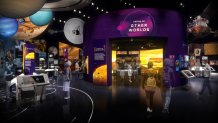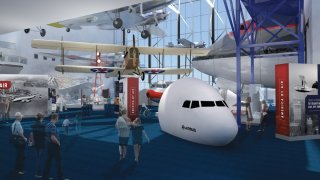
Calling all space travel dreamers and aerospace history buffs: The National Air and Space Museum is set to reopen half of its newly renovated building with eight new galleries this fall, the Smithsonian says.
After a seven-year renovation, and several months of complete closure, the museum reopens Oct. 14. Free timed-entry passes are now available on the museum’s website.
The renovations include updates to the planetarium, museum store and Mars Café, so soon enough visitors can once again explore space, buy a NASA hat and refuel on "Mars."
“This is one of the most exciting times in the National Air and Space Museum’s history,” Chris Browne, a director of the museum said. “When we open the first reimagined galleries, we hope all visitors are inspired by artifacts on display for the first time, favorite icons of aerospace presented in new ways and diverse storytelling.”
Below are previews of some of the redesigned exhibitions:
"America by Air"
This exhibit is the classic Air and Space Museum experience, tracing the history of air transportation in the United States to the technology-enhanced travel of today. It will feature familiar planes, such as the Boeing 747, and new artifacts such as a Lincoln-Standard H.S., a small two-seat plane.
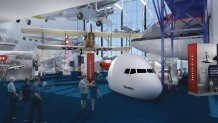
"Destination Moon"
The museum expects this exhibit to be a “blockbuster.” It will give visitors an up-close view of artifacts from the 1969 moon landing and info on what led to humans walking on the Moon.
The centerpiece is the Apollo 11 command module and Neil Armstrong’s Apollo 11 spacesuit, all in custom-climate-controlled cases.
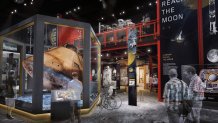
"Nation of Speed"
This exhibit explores how the "pursuit of speed" has shaped Americans' national identity. Vehicles known for being the fastest and the best will be featured, such as Mario Andretti’s Indy 500-winning race car and a plane that has hypersonic speed.
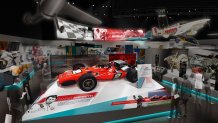
The Kenneth C. Griffin "Exploring the Planets" Gallery
Prepare to feel inspired by the vastness of space and the planets it contains. The Voyager Spacecraft and Mars Rover have helped humanity understand the planets in Earth’s galaxy.
"Visitors will tour the solar system and learn what it would be like to walk on another world through an immersive, interactive experience," the museum says.
